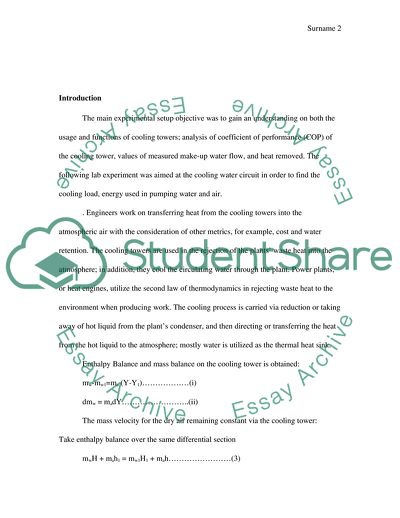Cite this document
(Six Measurements of Cooling Tower Lab Report Example | Topics and Well Written Essays - 2750 words, n.d.)
Six Measurements of Cooling Tower Lab Report Example | Topics and Well Written Essays - 2750 words. https://studentshare.org/engineering-and-construction/1872754-cooling-tower
Six Measurements of Cooling Tower Lab Report Example | Topics and Well Written Essays - 2750 words. https://studentshare.org/engineering-and-construction/1872754-cooling-tower
(Six Measurements of Cooling Tower Lab Report Example | Topics and Well Written Essays - 2750 Words)
Six Measurements of Cooling Tower Lab Report Example | Topics and Well Written Essays - 2750 Words. https://studentshare.org/engineering-and-construction/1872754-cooling-tower.
Six Measurements of Cooling Tower Lab Report Example | Topics and Well Written Essays - 2750 Words. https://studentshare.org/engineering-and-construction/1872754-cooling-tower.
“Six Measurements of Cooling Tower Lab Report Example | Topics and Well Written Essays - 2750 Words”. https://studentshare.org/engineering-and-construction/1872754-cooling-tower.


